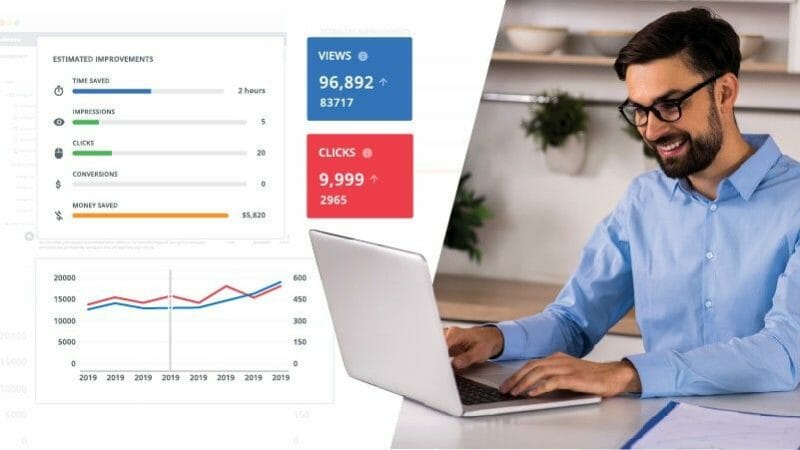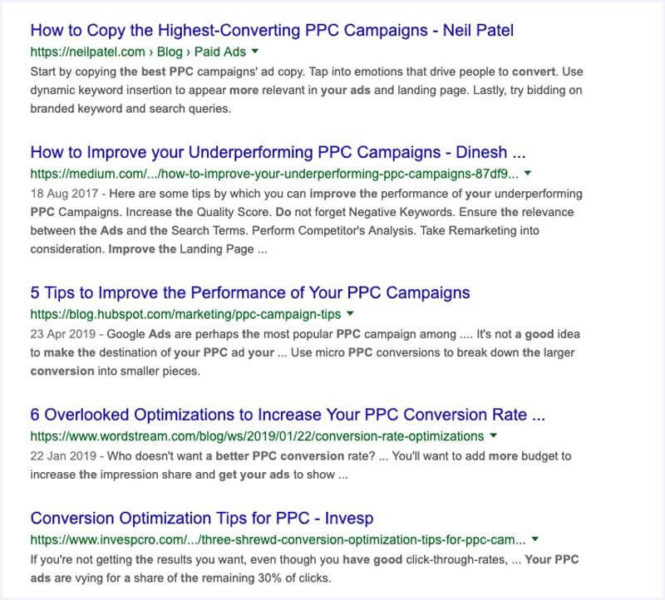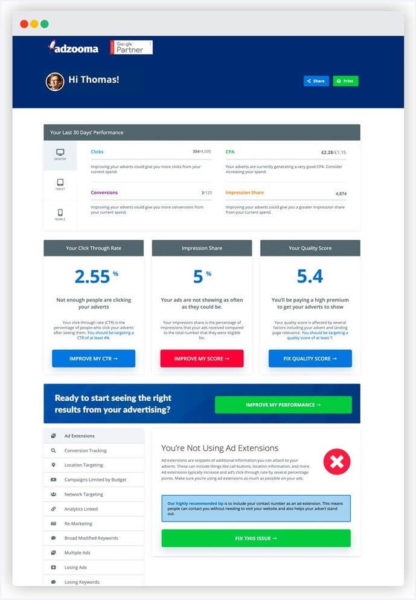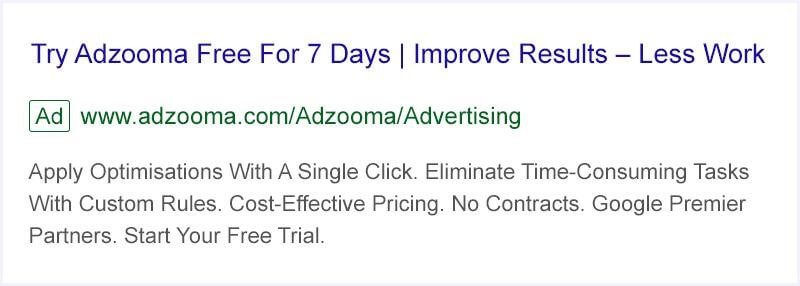Opinions expressed in this article are those of the sponsor. Search Engine Land neither confirms nor disputes any of the conclusions presented below.
Three reasons PPC campaigns fail that nobody seems to care about
Google “how to make your PPC ads convert better” and your search results will be littered with blog posts like this: Don’t worry, they’ll tell you. It’s “quick and easy”. Use these “rapid growth hacks”. Here are some “tricks”. Here’s how to copy the best-converting PPC campaigns. And, honestly, I get it. I’m not criticizing […]

Google “how to make your PPC ads convert better” and your search results will be littered with blog posts like this:

Don’t worry, they’ll tell you. It’s “quick and easy”. Use these “rapid growth hacks”. Here are some “tricks”. Here’s how to copy the best-converting PPC campaigns.
And, honestly, I get it. I’m not criticizing fellow writers for doing their jobs. These posts are great for SEO. Google wants you to put out quality content that answers people’s questions as quickly as possible. Writers are going to do that.
Perhaps these guides will help you, perhaps they won’t. But I’ll tell you this for free: they are selling you a dangerous lie.
Here’s the truth: optimizing your PPC campaigns is not easy. Sometimes it’s not even that quick!
But it’s incredibly powerful if you do it right.
“Be first, be smarter or cheat”
In the brilliant 2011 film Margin Call, bigshot investment banker John Tuld says: “There are three ways to make a living in this business; be first, be smarter or cheat.”
Copying your competitors is cheating. Following “ten tips” guides – even if you see some success – is cheating too. It could work – but it probably won’t work that well. And what if it doesn’t? What do you do next?
It’s why understanding and deploying what comes next is essential. There are no lies here: my way is harder, and it might take longer. But it’s smarter. It gives you the mindset you need for success.
Reason one: don’t follow the herd, be a wolf
I’ve been helping businesses run PPC campaigns for a long time. Generally, businesses are run by busy people who don’t have enough hours in the day. This time pressure forces them to rush. They scramble around looking for best practices to apply.
But here’s the problem: general best practices aren’t specific enough to your business.
See, what works for Shoe Salesman might not work for High High Heels. And “10 quick PPC ad hacks for any business” are unlikely to work well for either business.
It’s why free tools like the Adzooma Performance Score Report are much more valuable than generic lists. They look at data that’s specific to your business and provide actionable feedback.

But even when you’re armed with that information, you’ve still got to think strategically. You’ve got to think big picture.
Cut it down to this: what’s the key to success in marketing?
Know your audience. Understand what drives them.
Data, customer, act
So, how do you figure out what your audience wants? Ask them.
No, really.
One of the most successful PPC campaigns I ever ran came from some pretty banal data.
Picture this. My client was selling board games. They were spending tons of money on online advertising but it was performing poorly. When I dug into their data, I found something I didn’t expect.
Generally, people spend more money online on a Monday and it tails off as the week goes on. But for this client, the trend was even stronger. People were going into their working week and spending big early on Monday – especially the Monday after that month’s payday.
We spent money on an incentivized survey to analyze this.
Collating the responses, we found that people needed a “pick me up” at work. They wanted a game delivered for their game night which was typically Thursday, Friday or Saturday – hence the purchase on Monday.
To help make their purchasing decision, customers were also watching “how to play” videos of the board games they were interested in.
Here’s what we did:
- Added “how to play” YouTube videos to our sales pages
- Diverted a huge chunk of our budget to Monday mornings and afternoons
- Reworked the copy of our ads to emphasise the “learn to play” video element
It was an explosive success that came from thinking strategically.
We used our data, we asked our customers, we acted.
Reason two: winning the battle and losing the war
Not enough people who run PPC advertising truly consider the customer journey. They pour over their data, they tweak a word here or there, they fiddle with audiences and budgets and timeframes.
They cheer at a 10% increase in conversion rates one week; they cry at a 10% decrease the next. They look for marginal gains to cost per click, cost per acquisition, etc.
They think tactically, not strategically. Short term, not long term. Win now, whatever later.
Sure, thinking strategically with PPC campaigns is not as easy, but it’s much more useful. And it’s much more likely to be successful.
Pathfinding and the customer journey
Let me show you: get a piece of paper and write “What’s the action I want my customer to take?”
Keep it somewhere close. It’s the golden rule for PPC.
Too many people answer this question with “click on my ad”. And, sorry, but that’s just plain wrong.
It’s actually best to start at the end.
Head to the page people will land on when they click your ad. Look for the action you want people to take. Is it signing up for a newsletter? Is it buying a dress? Is it signing up for a free trial of your software?
Now, work backwards from there. What are the steps your visitor must take before they can do what you want them to do?
Now you’re thinking strategically.
Seventeen steps to complete failure
One of the biggest impacts I ever had on a company came from using this “pathfinding” process. It came from seeing the bigger picture.
The client’s PPC campaigns were failing because they had thought tactically, not strategically.
Sure, I changed a few words in their ad copy and tweaked their target audience – but whoever had come before me had done a stellar job with that in the first place.
What was wrong? There were seventeen steps in the customer journey.
Seventeen!
It took seventeen steps for a customer to go from clicking the ad to having their holiday booked.
That’s insane. A thousand blessings to the few customers who endured that process!
Map out your customer journey. Go to Amazon or other ludicrously successful sites and map out their customer journeys. Check out your competitors, too.
The journey should be short and simple. Cut out anything unnecessary. Consider having more streamlined (and personalized) journeys for specific campaigns. One lander for this campaign, and another for that one.
You want scalpel-sharp focus with PPC. Always and forever.
Reason three: not testing your ad copy correctly
With your customer journey in mind, you can start to write better ad copy too.
See, overworked PPC managers often hunt through their company’s marketing materials to borrow text. They look at competitors. They hit up Google Trends.
But they don’t look at the lander. They don’t think about the customer journey.
A colleague of mine presented the team I work on with the following ad:

“Can you do better?” he asked.
We were worried. See, this was his “champion ad” and my colleague is extremely good at his job. The ad’s numbers were pretty damn good.
Well, we improved them. The “winning” ad from our alternate set is here:

Why’s it doing better?
Remember that golden rule above all else: focus on the action you want your customers to take.
See, this was a brand campaign. What are the goals for that? Here are three: build trust, reassure the user, get them to take an action.
Compare that with a “how to improve your online advertising” search. In that case, the searcher wants something educational. Consider how different the ad copy for that would be.
The new PPC ad and its landing page won because it built trust, reassured the user and led them to sign up for our free trial.
Of course, it’s harder than it sounds. There’s lots of text to play around with in a modern PPC ad. You’re tempted to write about the benefits of working with your company, the features of your products, etc.
Instead, think of it like this:
What’s the action you want them to take? What are the benefits to the user of taking that specific action?
Keep it tight, keep it focused and keep testing your message.
Read “quick and easy” how-to guides and mine them for ideas. But, please, never let them fool you into thinking that optimizing your PPC campaigns is quick and easy.
Related stories
